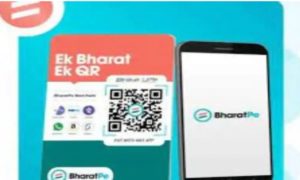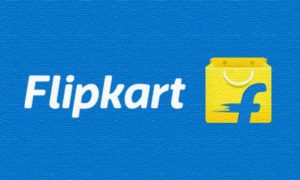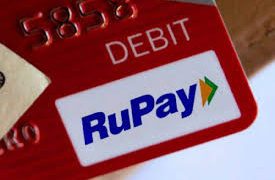E-fulfillment, or an electronic response, blended with traditional methods is the key to optimising a company’s one-to-one marketing efforts
E-fulfillment, an electronic response to a direct marketing request, can be an important part of a company’s marketing strategy to reach customers directly. In the right situation and to the right customer, it can offer several advantages.
The three biggest advantages of e-fulfilment are:
1 Speed: You meet targets quickly.
2 Cost-effectiveness: In some instances, it makes it cheaper to reach the customer.
3 Control/customisation: It allows for adjusting your campaign in real time, test and move forward
One to one with customers—when content is completely personalised, including the cover letter/note, types of attachments and the content of each attachment—is expensive and time-consuming using land-based methods.
But not all situations call for solely an e-fulfilment system. Careful consideration of the types of the target being reached and the company’s marketing objective will determine the appropriate combination of e-based and land-based fulfilment components to be utilised.
For example, if a credit-card provider’s database identifies a person with an outstanding credit rating and a high income, that person may get a customised email that includes an offer to upgrade their card and links to exotic vacation destinations with special offers.
Someone else with a good credit history may get an offer for a balance-transfer offer or personal loan proposal.
Tweak as you go along
Flexibility is an important benefit of a fully integrated e-fulfilment system. Such a system makes it easy to evaluate a campaign’s rollout in real time—watch the pick-up on the first cell, tweak the campaign, watch the second cell go out, make another adjustment, and so forth.
With the proper systems in place, e-fulfillment offers direct marketers a wide range of options. It permits increased analysis and customisation of future messages, allowing marketers to see when people open the emails, and track as they click through to website links.
Real-time web reports of hits are available, detailing soft bounce-backs (server is temporarily down or a mailbox is full) and hard bounce-backs (service no longer exists or e-mail address is not valid).
If an email bounces back with a bad address or full mailbox, companies may have a call centre representative double-check with the intended recipient to confirm how they want to receive information.
The following examples offer an overview of possibilities and a preview of where things are heading for SMEs.
Case 1: Fewer reminders, more completions
A liability insurance company was using mail fulfillment as a marketing tool with its professional services clients. Names and detailed information were generated daily, with policies printed and mailed twice a week–incorporating e-fulfilment. Maximising its effectiveness was simply a matter of designing a system that converted content into a PDF file at the point it would have “gone to print” in the traditional fulfilment process.
These files are created in the same pre-printed format that customers would have received in hard-copy form. Like its traditional counterpart, the body of the e-fulfillment text message is highly personalised based on a client’s insurance history, with rate and coverage information, policy type, brand and payment method received/requested but it also includes a link to the insurer’s website for more information.
The policy itself is attached to the email and incorporates client-specific information. In addition, the insurance company finds that email enables it to send fewer reminders to get policy renewals and it is receiving more payments at a faster cycle. This could be modified for individual customers today with technology.
Case 2: Talk directly to your prospect
In many instances, customers and potential customers can request information through a variety of channels, including a call centre, website or mail.
In one such instance, a pharmaceutical manufacturer generates data daily from these sources. Based on the depth of information in the marketing database—gender, age, products requested and used—the development of highly customised text messaging and rich format attachments are possible.
The system also enables custom e-mail messaging with links to specific parts of the company’s website. In this case, the company is developing a true one-to-one marketing campaign that, over time, can be refined based on this interaction loop.
Today, companies using e-fulfilment with rich content are also engaged in parallel mail campaigns. They are not looking to abandon traditional fulfilment methods but rather want new ways to get closer to their customers.
As consumers click through the company’s websites via email links, each visit adds to their profile for future e-marketing efforts. As the file on each person is enhanced, marketers can cost-effectively move into more focussed cross-selling and up-selling campaigns.
The system also enables custom e-mail messaging with links to specific parts of the company’s website. In this case, the company is developing a true one-to-one marketing campaign that, over time, can be refined based on this interaction loop.
Today, companies using e-fulfilment with rich content are also engaged in parallel mail campaigns. They are not looking to abandon traditional fulfilment methods but rather want new ways to get closer to their customers.
As consumers click through the company’s websites via email links, each visit adds to their profile for future e-marketing efforts. As the file on each person is enhanced, marketers can cost-effectively move into more focussed cross-selling and up-selling campaigns.
Overall, the trend is for companies to implement one-to-one marketing tools. More and more, they are looking for expertise from direct marketing service providers that enables them to reach customers and prospects within a very structured campaign but target each one with a specific package of information via their mailbox, e-mailbox, over the phone or a website.E-fulfilment enables you to watch a campaign unfold in real time and improve it as needed, including the way individual follow-up is done. And blending e-fulfilment (with its reporting and campaign management capabilities) with the appropriate traditional fulfilment methods is the key to optimising a company’s one-to-one marketing efforts.



































